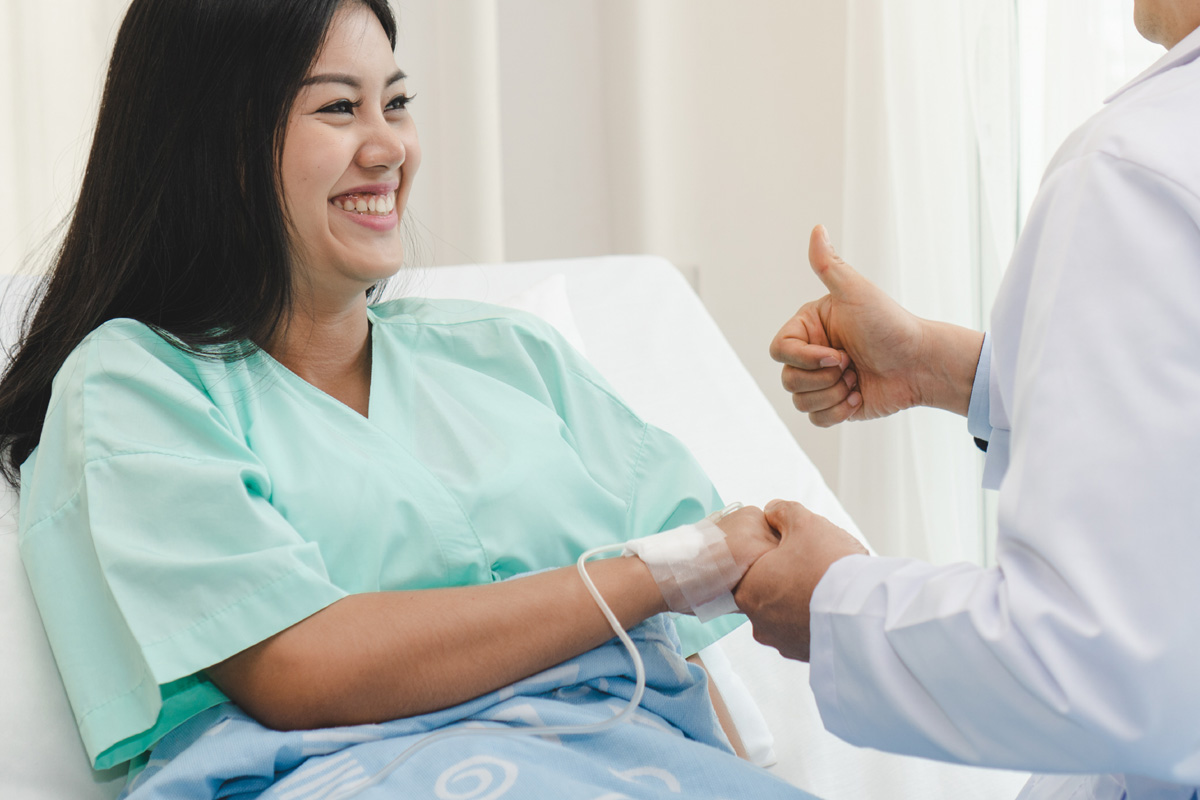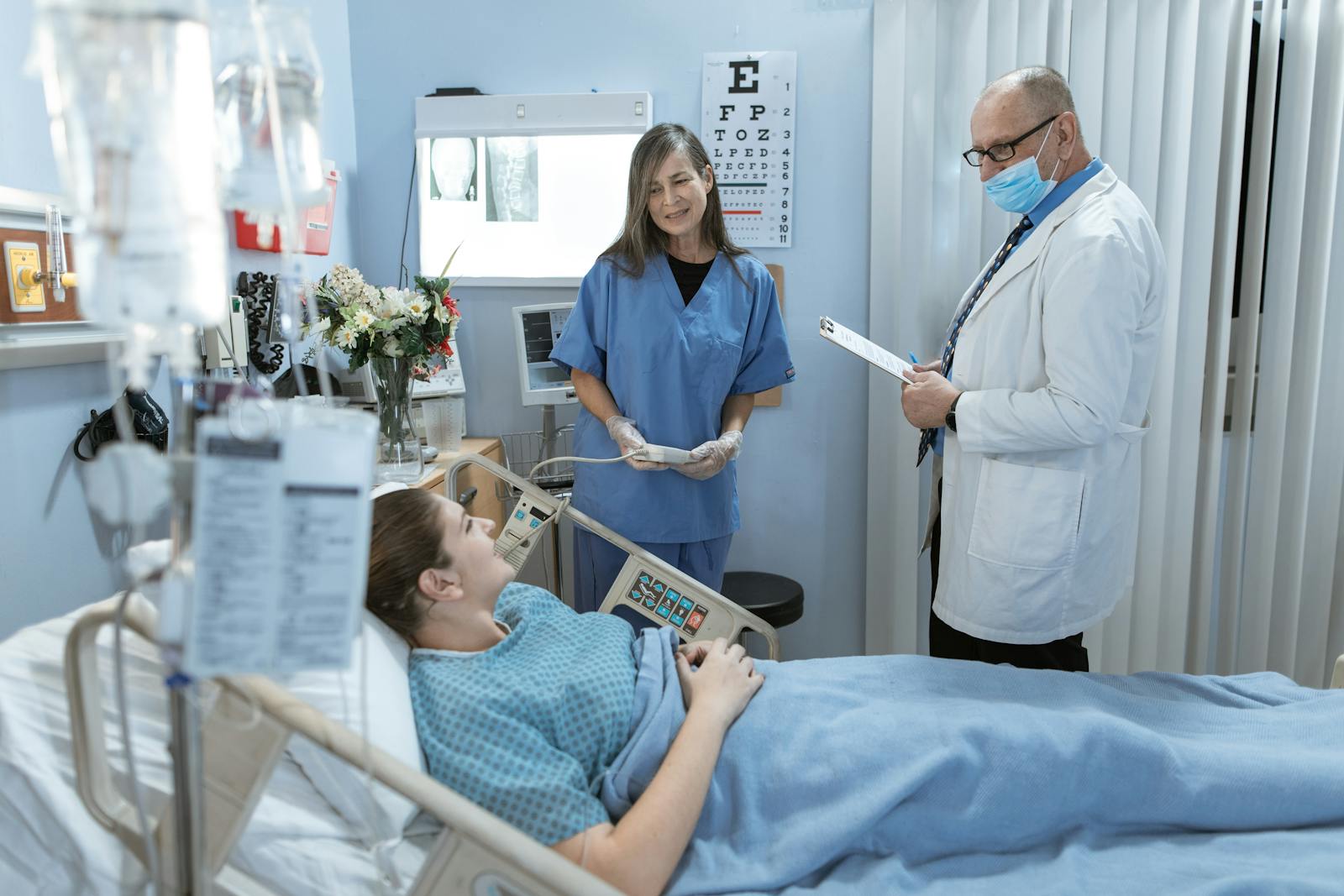The surgical removal of the coccyx, known as coccygectomy, presents a unique set of challenges in post-operative recovery. It’s imperative to discuss the nuances of various techniques that can contribute to faster healing after this procedure. Among these techniques are pain management strategies, nutrition, hydration, quality sleep, and mental health considerations. Furthermore, the potential complications and the transition to normal activities warrant attention. Each of these topics holds potential for exploration, and collectively, they can shape a comprehensive approach to expedite recovery post-coccygectomy.
Understanding Coccygectomy
Coccygectomy, a surgical intervention, involves the removal of the coccyx, also known as the tailbone, to alleviate persistent pain or discomfort associated with conditions like coccydynia. This surgery is typically considered a last resort treatment after non-surgical interventions have failed. The procedure details are intricate, requiring careful planning and precise execution.
The coccyx injury causes that necessitate coccygectomy range from direct trauma, such as a fall, to childbirth, and repetitive strain injuries. Direct trauma is the most common cause, frequently resulting from falls onto the tailbone that fracture or dislocate the coccyx. Childbirth can also cause injury to the coccyx due to the pressure exerted on the tailbone during labor. Repetitive strain injuries, while less common, can occur from prolonged sitting or activities that put constant pressure on the tailbone.
The coccygectomy procedure details involve the patient being placed under general anesthesia. The surgeon then makes an incision over the coccyx and carefully separates the muscles and ligaments attached to it. The coccyx is then removed, and the incision is closed with sutures. Post-operative care is crucial for a successful recovery, which will be discussed in the subsequent section.
Immediate Post-Operative Care
The phase of immediate post-operative care following a coccygectomy operation is a critical component in optimizing the patient’s recovery trajectory. This encompasses a three-pronged approach, which includes strategic pain management, surgical site cleanliness maintenance, and the delicate balance between rest and mobility. Each facet contributes to not only the speed but also the efficacy of healing, underscoring their importance in the post-operative care plan.
Pain Management Strategies
Often, effective pain management in the immediate aftermath of a coccygectomy is crucial to facilitate a smoother and quicker recovery process. Pain management strategies aim to mitigate discomfort and prevent possible complications, such as opioid misuse.
These strategies include:
- Regular monitoring and assessment of pain levels: This allows for timely adjustments to the pain management plan.
- Use of multimodal analgesia: This strategy combines different types of pain relief methods to minimize the use of opioids.
- Encouragement of alternative therapies: Techniques such as physical therapy, acupuncture, and meditation can complement traditional pain management approaches.
- Opioid misuse prevention: This involves prescribing the lowest effective dosage, educating patients about potential risks, and closely monitoring their use of prescribed opioids.
Ensuring Surgical Site Cleanliness
Maintaining the cleanliness of the surgical site is a critical aspect of immediate post-operative care, as it significantly reduces the risk of infection and promotes faster healing after a coccygectomy. Infection prevention is paramount, and this can be achieved through the diligent application of sterile dressings and the strict observance of aseptic techniques. A detailed inspection of the surgical site should be routinely conducted to assess for signs of infection, such as redness, swelling, or discharge. Concurrently, the judicious use of antibiotics can further aid in minimizing the risk of infection. Antibiotic use should be guided by local susceptibility patterns and individual patient factors. Ultimately, the goal is to foster an optimal environment for healing, thus accelerating recovery after coccygectomy.
Rest and Mobility Balance
While ensuring a clean surgical site is critical, achieving a balance between rest and mobility in the immediate post-operative phase also plays a significant role in enhancing recovery times post coccygectomy. Patients are advised not to rush their recovery, but instead find a balance that promotes healing without causing discomfort or potential complications.
Key factors in this balance include:
– Stress management: Stress can prolong healing, so techniques like deep-breathing and meditation are beneficial.
– Emotional support: This can come from friends, family, or professionals and helps in coping with post-surgical stress.
– Controlled mobility: Gentle movements will prevent stiffness and boost circulation, aiding recovery.
– Adequate rest: This is essential for the body to heal and recover effectively.
Each patient’s balance will be unique, based on their individual needs and circumstances.
Pain Management Techniques
In order to effectively manage post-coccygectomy discomfort, a variety of pain management techniques are often employed, each with its distinct benefits and potential drawbacks. The traditional approach includes pharmaceutical interventions such as opioids and non-steroidal anti-inflammatory drugs (NSAIDs). However, these treatments can lead to side effects like gastrointestinal problems and dependency issues.
Increasingly, alternative therapies are being embraced as part of a comprehensive pain management strategy. Techniques such as acupuncture, physiotherapy, and chiropractic adjustments may provide substantial relief for some patients. These approaches are generally considered safer, with fewer side effects than pharmaceutical options, but their efficacy can vary greatly among individuals.
Emotional support is also a crucial component of pain management. Chronic pain can lead to feelings of isolation, depression, and anxiety, which can exacerbate the perception of pain. Therefore, psychological interventions, including cognitive-behavioral therapy (CBT) and mindfulness-based stress reduction (MBSR), are often recommended. These techniques can help patients develop coping strategies to deal with pain and improve their overall quality of life.
Role of Nutrition in Healing
The role of nutrition in the healing process after a coccygectomy is a critical aspect that warrants thorough examination. A balanced diet, enriched with specific nutrients, can significantly expedite the healing process and improve the patient’s overall recovery experience. Furthermore, the role of hydration in recovery is a crucial factor that can influence the pace and quality of wound healing and tissue regeneration.
Importance of Balanced Diet
Drawing upon the symbiotic relationship between nutrition and recovery, a balanced diet plays an instrumental role in accelerating healing after a coccygectomy. This is particularly significant considering the potential challenges of supplement usage and managing food allergies, which can complicate the healing process.
- A balanced diet aids in rebuilding tissues and strengthening the immune system.
- By providing the body with essential nutrients, it can effectively combat infections and promote faster recovery.
- In the case of food allergies, it is vital to identify and avoid allergenic foods, enhancing the body’s ability to heal.
- Supplement usage must be carefully managed to ensure optimal nutritional balance, intensifying the healing process.
In essence, a well-rounded diet is a cornerstone of a swift and efficient recovery, underscoring its indispensable role in post-coccygectomy healing.
Specific Nutrients for Healing
Building upon the foundation of a balanced diet, it is crucial to examine the specific nutrients that significantly contribute to expedited healing post-coccygectomy. Vital nutrients such as proteins, vitamins A and C, zinc, and copper, foster tissue growth and repair. Supplement selection should be based on individual nutritional needs and deficiencies, particularly focusing on protein supplements for muscle regeneration and antioxidants to mitigate oxidative stress on healing tissues. Wound dressing can also be enhanced with topical application of micronutrients such as zinc and vitamin A, known for their wound healing properties. Additionally, omega-3 fatty acids can reduce inflammation, promoting faster recovery. In essence, strategic nutrient intake can significantly influence the healing trajectory, potentially reducing the recovery period post-coccygectomy.
Hydration’s Role in Recovery
How vital, one may ask, is hydration in the recovery process post-coccygectomy? The answer is profoundly significant. Hydration plays a crucial role in every stage of the healing process. Understanding its importance and incorporating appropriate hydration frequency can expedite post-surgery recovery.
- Maintains electrolyte balance: Adequate hydration helps maintain a healthy electrolyte balance, essential for muscle function and energy levels.
- Facilitates nutrient absorption: Proper hydration aids in the transportation and absorption of critical nutrients that promote healing.
- Enhances tissue regeneration: Hydration assists in cell regeneration and growth, crucial for healing wounds.
- Promotes detoxification: Hydration helps flush out toxins, reducing inflammation and promoting faster recovery.
In essence, a well-hydrated body can significantly enhance recovery speed post-coccygectomy.

Importance of Adequate Hydration
Ensuring adequate hydration, a crucial aspect of post-operative care, significantly accelerates the healing process following a coccygectomy. The benefits of hydration are manifold, particularly in the context of surgery recovery.
Firstly, water consumption aids in the replenishment of body fluids lost during surgery and promotes the optimal function of organs. This is particularly important for the kidneys, which play a vital role in waste removal and maintaining balance of body fluids.
Further, hydration benefits the healing process by facilitating efficient oxygen and nutrient delivery to the surgery site, enhancing cell regeneration. Hydration also bolsters the immune system, a key factor in warding off post-surgical infections.
Moreover, water aids in the digestion and absorption of essential nutrients from food, which are integral to tissue repair and recovery. It also helps in maintaining elasticity and integrity of skin, which can mitigate the severity of surgical scars.
Thus, maintaining a consistent water intake routine can significantly expedite the recovery period. However, it is important to note that the amount of water intake should be balanced and monitored carefully to avoid complications such as hyponatremia.
Essential Exercises for Recovery
Incorporating a regimen of targeted exercises into the post-coccygectomy recovery process can play a pivotal role in enhancing mobility, strengthening muscles, and facilitating a swift return to daily activities. These exercises, when performed consistently and carefully, can significantly improve the recovery timeline, helping patients regain normal function more quickly.
Here are some essential exercises for recovery:
- Pelvic Tilts: These promote lumbar flexibility and strengthen lower back muscles.
- Kegel Exercises: These target the pelvic floor muscles, improving bladder control and stability.
- Gentle Walking: This low-impact exercise improves circulation, aiding the healing process.
- Deep Breathing Exercises: These help manage pain and reduce stress, providing emotional support during recovery.
Each exercise serves a specific purpose, addressing physical and emotional aspects of recovery. They encourage muscle strength, flexibility, and overall wellness, which are crucial for a successful recovery journey. However, patients must remember that any exercise regimen should be personalized and supervised by a qualified healthcare professional to ensure safety and effectiveness. Over time, these exercises can be progressively intensified, always respecting the body’s limits and the individual’s comfort level.
The Benefits of Physical Therapy
Building on the benefits of post-surgery exercises, a structured physical therapy program can offer a more comprehensive approach to rehabilitation after a coccygectomy, providing numerous advantages to the patient. This approach includes a combination of strength training, flexibility exercises, and soft-tissue manipulation, all designed to accelerate healing and restore normal function.
A key component of physical therapy is the judicious use of therapy equipment. These tools, ranging from resistance bands to specialized machines, can target specific muscle groups and help manage pain, reduce inflammation, and improve mobility. More importantly, the equipment can be tailored to the patient’s unique needs, ensuring a personalized and effective rehabilitation process.
The benefits of physical therapy, however, are not limited to the immediate post-operative period. Over the long-term, a well-executed program can aid in preventing complications such as chronic pain or postural issues. The rehabilitation timeline can vary widely depending on the patient’s overall health and the complexity of the surgery, but regular physical therapy sessions can undoubtedly expedite the recovery process.
Strategies for Better Sleep
The quality of sleep post-coccygectomy plays a pivotal role in the overall recovery process. To enhance restorative sleep, it is crucial to explore comfortable sleep positions that reduce pressure on the surgical area and implement nighttime pain management strategies. These strategies, underpinned by medical evidence, can significantly expedite healing and improve the patient’s quality of life.
Comfortable Sleep Positions
Navigating the challenge of finding a comfortable sleep position after a coccygectomy can contribute significantly to quicker healing and recovery. One’s choice of sleeping aids and mattress selection play a crucial role in this process.
- Opt for a firm, supportive mattress that helps maintain good spinal alignment.
- Utilize specially designed coccyx cushions or pillows that offload pressure from the tailbone area.
- Experiment with different sleep positions, such as sleeping on your side with a pillow between your knees or lying on your stomach with a pillow under your hips.
- Consider adjustable beds which can be configured to alleviate pressure on the coccyx.
Nighttime Pain Management
Implementing effective nighttime pain management strategies can significantly improve sleep quality, and consequently, expedite the healing process post-coccygectomy. A detailed analysis reveals that the usage of sleeping aids can play a pivotal role. Medications such as over-the-counter analgesics, prescription drugs, or natural supplements can aid in reducing pain and promoting restful sleep. However, their usage should be closely monitored to prevent dependency.
Moreover, the provision of emotional support is indispensable. It’s well-documented that emotional distress can exacerbate physical pain, and addressing this aspect can improve the overall healing journey. Techniques such as mindfulness, meditation, and counselling can help manage anxiety and stress. Thus, a comprehensive approach to nighttime pain management should encompass both pharmacological and emotional support strategies.
Dealing With Potential Complications
Unforeseen challenges may arise during the post-operative period of a coccygectomy, necessitating an understanding of potential complications and strategies to mitigate their impact. Complication prevention is a crucial component in achieving faster and effective healing. It is essential to be aware of the possible complications which include infection, bleeding, and prolonged pain.
Patients should be well-informed about medication side effects. These could range from mild discomforts such as nausea, itching, or constipation, to severe complications such as respiratory depression or allergic reactions.
Several strategies can be incorporated to handle these potential complications:
- Regular wound care and hygiene could help prevent infection.
- Monitoring for signs of excessive bleeding is essential. Any unusual changes should be reported to the healthcare provider immediately.
- Pain medication should be used as directed. Overuse or misuse could lead to adverse effects.
- Any allergic reactions or unusual side effects from the medication should be reported promptly for appropriate action.
Emphasizing Mental Health
Recognizing the profound impact of mental health on recovery speed, it is crucial to incorporate psychological support strategies following a coccygectomy. Fostering emotional resilience and employing effective stress management techniques can significantly enhance the healing process and overall patient well-being. It is not uncommon for patients to experience anxiety and depression due to the pain and limited mobility associated with this surgical procedure.
Emotional resilience helps patients navigate these challenges, improving their capacity to adapt and maintain a positive attitude despite adversity. Medical professionals should provide resources, such as psychoeducation and cognitive-behavioral interventions, to bolster this resilience. Additionally, support groups can offer a sense of community and understanding that reduces feelings of isolation and fosters resilience.
Stress management, on the other hand, targets the physiological responses to stress that can impede recovery. Techniques such as mindfulness, meditation, and controlled breathing can mitigate the body’s stress response, promoting a faster healing process. Moreover, encouraging a routine sleep schedule and healthy diet can enhance these effects.
To conclude, emphasizing mental health following a coccygectomy should not be overlooked as it possesses the potential to expedite recovery and contribute to overall patient satisfaction.
Returning to Normal Activities
Gradually resuming regular activities post-coccygectomy is an integral part of the recovery process, requiring careful management and supervision by healthcare professionals. The transition phase involves strategic planning and certain modifications in daily routine and environment.
Incorporating post-surgery clothing is an initial step towards comfort and convenience. These garments are designed to minimize discomfort and enable ease of movement.
Workplace adjustments form another critical aspect of this process. Employers should be considerate and flexible, allowing for changes in the physical workspace, work hours, or work-from-home options if possible.
The return to normal activities post-surgery can be facilitated by:
- Adapting to post-surgery clothing that encourages comfort and mobility
- Making necessary workplace adjustments to accommodate physical restrictions
- Gradually increasing physical activities under the supervision of healthcare professionals
- Focusing on a balanced diet and adequate hydration to support healing
This strategic approach enables patients to regain normalcy in their lives while supporting the healing process. It is essential to remember that the speed of recovery varies among individuals, thus patience and perseverance play a crucial role in this journey.
Frequently Asked Questions
Is There a Possibility of Recurrence After Coccygectomy?
Yes, there is a possibility of recurrence after coccygectomy. However, with proper post-surgery rehabilitation and adherence to the coccygectomy recovery timeline, the likelihood of recurrence can be significantly reduced.
What Are the Potential Long-Term Side Effects of Coccygectomy?
Potential long-term side effects of coccygectomy can include persistent pain requiring management, and reduced post-surgery mobility. Other complications may involve infection, wound dehiscence, rectal injury, and coccyx bone regrowth causing recurrent symptoms.
How Can I Prevent Infections After the Surgery?
To prevent infections post-surgery, diligent wound care is paramount. Clean the area regularly using doctor-recommended solutions. Antibiotic usage, as prescribed, is also crucial to deter bacterial growth and safeguard against potential infections.
Are There Any Specific Lifestyle Changes I Need to Make After Coccygectomy?
Post-coccygectomy, specific lifestyle changes can include adopting pain management strategies like regular pain medication and practicing physical therapy exercises to rebuild strength, improve mobility, and aid in faster recovery. These changes can significantly enhance your postoperative experience.
How Does Coccygectomy Affect My Ability to Sit for Long Periods?
Coccygectomy may initially impact your ability to sit for extended periods. However, incorporating pain management strategies and utilizing ergonomic seating options can significantly alleviate discomfort and enhance your sitting tolerance over time.


